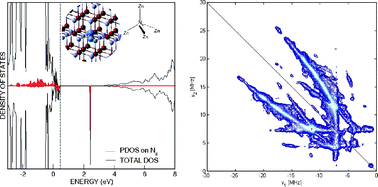Nitrogen impurity states in polycrystalline ZnO. A combined EPR and theoretical study†
Abstract
Continuous wave (

* Corresponding authors
a Dipartimento di Scienza dei Materiali, Università di Milano-Bicocca, via R. Cozzi 53, 20125 Milano, Italy
b
Dipartimento di Chimica IFM, Università di Torino and NIS Centre of Excellence, via P. Giuria 7, Torino, Italy
E-mail:
m.chiesa@unito.it
Continuous wave (

 Please wait while we load your content...
Something went wrong. Try again?
Please wait while we load your content...
Something went wrong. Try again?
F. Gallino, C. Di Valentin, G. Pacchioni, M. Chiesa and E. Giamello, J. Mater. Chem., 2010, 20, 689 DOI: 10.1039/B915578C
To request permission to reproduce material from this article, please go to the Copyright Clearance Center request page.
If you are an author contributing to an RSC publication, you do not need to request permission provided correct acknowledgement is given.
If you are the author of this article, you do not need to request permission to reproduce figures and diagrams provided correct acknowledgement is given. If you want to reproduce the whole article in a third-party publication (excluding your thesis/dissertation for which permission is not required) please go to the Copyright Clearance Center request page.
Read more about how to correctly acknowledge RSC content.
 Fetching data from CrossRef.
Fetching data from CrossRef.
This may take some time to load.
Loading related content
